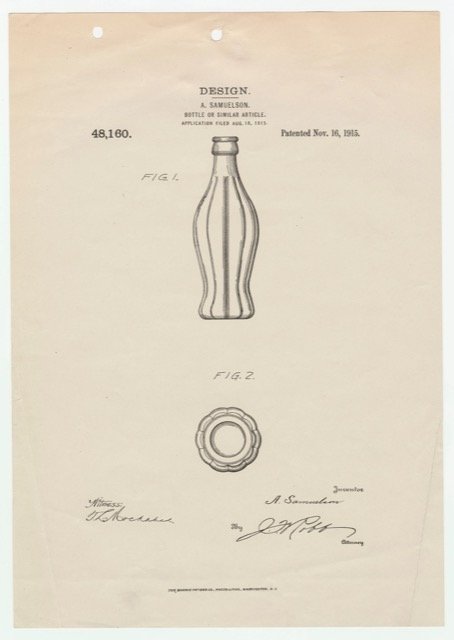
I often have clients asking me about design patents because they think that they have designed something new. Once we dig in a bit deeper, it will often turn out that their new design is actually useful and as such is not eligible for design patent protection.
What does a design patent cover?
A design patent covers the non useful and non functional aspects of a useful object. This is a very abstract concept to think about.
One great example is the shape of the Coca Cola® bottle that we are all familiar with. The bottle itself is very useful for holding the cola drink and allowing us to pour it from the bottle. But the specific shape of the bottle does not add anything to the function. For this reason, the shape and design of the bottle was covered by a design patent (design patents last 15 years from the date of issue, so protection is not indefinite).
When to use a utility patent
Many times it will be less clear as to whether a design patent would be the best option for a design. In some cases, a design patent is an option, but so is a utility patent. The utility patent is the most common patent that we think about and it covers any new, useful, and non obvious invention.
In some cases, a very useful invention may also have a design aspect to it. For example, a board game with very specific rules will be considered useful. But the design of the board itself may be eligible for design patent protection.
As can be imagined, it is sometimes difficult to parse out what part of a product is useful and what is a non functional design feature.
If you have more questions about this, please consider joining our Pirate Fight Club® group where you can submit questions and I will endeavor to answer them in an upcoming video.